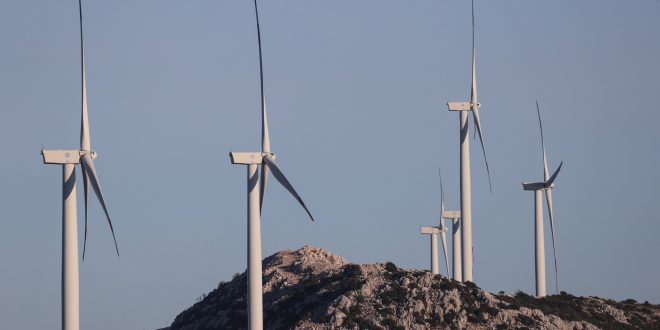Thirty years after becoming a pioneer in offshore wind farming, Denmark now wants to expand the repertoire of renewables again – this time with the world’s first “energy islands.” The plans have long been discussed in the country but have now been accelerated amid the disruption to the global energy market caused by Russia’s Ukraine invasion, which Denmark hopes to address by providing more renewable energy to the mainland.
In a statement, Denmark’s Minister of Climate, Energy, and Utilities Dan Jørgensen said Denmark and Europe “must be free of Russian fossil fuels as fast as possible.” To achieve this, the country will move forward with its energy transition by “massively increasing” the deployment of renewable energy on land and at sea, Jørgensen said.
Denmark’s power mix is largely shaped by wind energy. In 2021, wind power accounted for almost 50% of total electricity generation in the country, followed by bioenergy and fossil fuels – partly imported from Russia. But the government has already said earlier this year it hopes to stop Russian fossil fuel imports “as soon as possible”.
This is where the energy islands come in. Today, Denmark gets the energy from ocean winds via isolated offshore wind farms that supply electricity directly to the grid. With the energy islands, the wind turbines can be located farther away from the coast and distribute the power they generate between several countries more efficiently.
The islands will act as hubs that collect electricity from surrounding offshore wind farms and then distribute it to the grid in Denmark as well as directly to other countries. This allows electricity from an area with large wind resources to be more easily routed to areas that need it most, achieving a higher level of energy efficiency.
The way forward
The plan includes building two islands. One will be located in the North Sea, first serving facilities for 3GW of offshore wind farms and then will be expanded to 10GW. The offshore turbines that will supply power to the island will be larger than current turbines and will be located further out at sea than before.
The second island will be located in the Baltic Sea, specifically on the island of Bornholm, where electricity from offshore wind farms will be routed to electricity grids in Denmark and neighboring countries. It will have a capacity of 2GW, corresponding to two million households. Wind farms will be established about 20km from the coast.
The Danish system operator of the transmission network, Energinet, has already commissioned preliminary studies on the seabed around Bornholm and the area in the North Sea. These will ensure that both the offshore wind farms and the artificial island are placed in areas that are suited for construction, with the least possible impact.
Denmark has a long history of exploiting the strong winds from the sea to produce electricity, with the first offshore wind farm set up in 1991. Now, the country hopes to take another big step with the construction of these two big energy islands, expanding further its renewable energy and hoping to leave behind its reliance on fossil fuels.

 Iran Energy News Oil, Gas, Petrochemical and Energy Field Specialized Channel
Iran Energy News Oil, Gas, Petrochemical and Energy Field Specialized Channel



